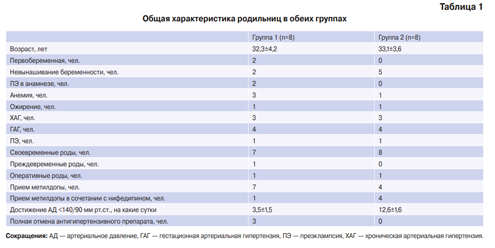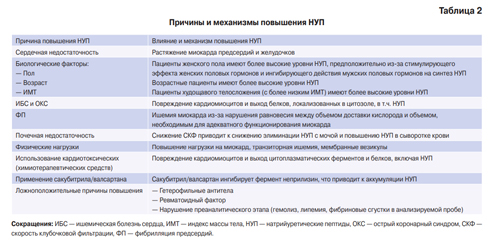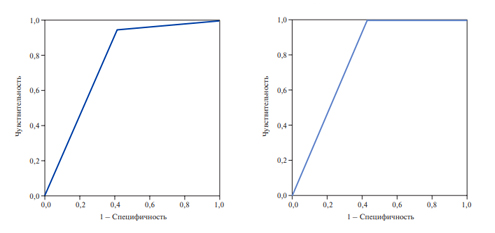Hypertension in pregnancy: controversial issues of national and international guidelines

Definition and classification
Hypertension (HTN) definition among pregnant women has not always been standardized. The criterion for HTN in pregnant women is systolic blood pressure (BP) (SBP) ?140 mm Hg and/ or diastolic BP (DBP) ?90 mm Hg, according to the 2000 National High Blood Pressure Education Program Working Group on High Blood Pressure in Pregnancy guidelines [1]. It is required to confirm the blood pressure increase by at least two measurements [2].
Nowadays there are several HTN forms in pregnant women, including chronic HTN, gestational HTN, and preeclampsia (PE), as well as PE, caused by chronic HTN [3-13].
Chronic HTN is the HTN, diagnosed before pregnancy or within the first 20 weeks of its development. HTN criterion is the blood pressure increase ?140/90 mm Hg before pregnancy or during its first 20 weeks, which does not disappear after delivery and tends to persist for >42 days after childbirth.
Gestational HTN is defined as an isolated SBP increase ?140 mm Hg and/or DBP increase >90 mm Hg, when being measured at least 2 times per 4 hours, developing after the 20th week of pregnancy among women, having normal blood pressure before pregnancy without proteinuria.
PE is a multisystem disorder, complicating pregnancy, childbirth and postpartum period, characterized by increase of SBP >140 mm Hg or DBP >90 mm Hg after the 20th week of pregnancy, when measured at least 2 times per 4 hours among women, who had normal blood pressure before pregnancy, combined with one or several of the following parameters:
- proteinuria (?30 mg/mol protein/creatinine ratio; ?300 mg/day; or a test strip value ?2+);
- kidney damage (creatinine level ?90 pmol/l);
- liver damage (elevated transaminase levels, for example, alanine aminotransferase or aspartate aminotransferase >40 IU/1), perhaps with abdominal right upper quadrant or epigastric pain (above stomach);
- neurological complications (for example, altered mental status, blindness, stroke, clonus, severe headaches and persistent scotoma);
- hematological complications (thrombocytopenia — platelet count <150000/pl, disseminated intravascular coagulation, hemolysis);
- uteroplacental dysfunction (for example, intrauterine growth restriction, impaired blood flow in the umbilical artery by Doppler ultrasound, or stillbirth).
PE, caused by chronic HTN, is diagnosed in pregnant women with HTN in the event of PE symptoms emergence.
The experts from the Russian Society of Cardiology (RSC) and the European Society of Cardiology (ESC) suggest to consider hypertension, persisting for 6 weeks (42 days) after delivery, which corresponds to the postpartum period, to be chronic HTN [5, 13], despite the fact that lots of researchers support the position, claiming that hypertension during pregnancy can be classified as chronic, if it persists for >12 weeks after childbirth [14, 15]. In addition, it is worth mentioning that ESC guidelines include “antenatally unclassifiable hypertension”, as that which arises before 20 weeks, but has not yet been evaluated after 42 days postpartum for final classification [5]. Several recommendations mention “white-coat hypertension”, “masked hypertension”, HELLP-syndrome (hemolysis, increased liver enzymes, low platelet count), eclampsia [4, 6-12]. Society of Obstetricians and Gynaecologists of Canada (SOGC) guidelines (2014) mention chronic and gestational HTN with the presence/absence of concomitant diseases [6].
Hypertension degree assessment plays an important role in addition to its form determination. Blood pressure increase classification in pregnant women can be used to characterize the hypertension degree in any form.
There are moderate (not severe) and severe hypertension [14]:
- moderate hypertension is diagnosed in the event of increased SBP, equal to 140-159 mm Hg and/or DBP, equal to 90-109 mm Hg;
- severe hypertension corresponds to SBP ?160 mm Hg and/or DBP ?110 mm Hg.
Some recommendations describe 3 blood pressure increase degrees, including mild (140-149/90-99 mm Hg), moderate (150-159/100-109 mm Hg) and severe (?160/110 mm Hg) [10].
Revealing two hypertension degrees (moderate and severe) during pregnancy has a fundamental importance for the prognosis, management, treatment and obstetrics [11, 12]. Besides this is a commonly known fact, that severe hypertension during pregnancy is related to high stroke [2, 10] and hypertensive encephalopathy risk even at lower blood pressure levels, compared to the general population [15].
It is worth noting that the American College of Obstetricians and Gynecologists (ACOG) recognized that revealing hypertension in pregnant women contradict the modified diagnostic criteria of the American College of Cardiology (ACC) and the American Heart Association (AHA), which identified stage 1 hypertension at a BP level of 130- 139/80-89 mm Hg and stage 2 hypertension at BP level of 140/90 mm Hg [16], which requires the diagnostic criteria revision [3, 12]. The remaining societies, which published their guidelines after 2017, did not change the diagnostic criteria, despite ACC/ AHA guidelines.
Target BP
The target BP levels are values below 160/110 mm Hg, according to the international guidelines [3-10]. The cross-sectional study of over 81 million hospitalizations confirmed that hypertensive disorders in pregnancy increase the stroke risk by 5,2 times [17]. In addition, the Control of Hypertension In Pregnancy Study (CHIPS) confirmed that severe hypertension is related to higher rates of maternal mortality, pregnancy loss, premature birth, low birth weight, neonatal care 48 hours later and a several other adverse obstetric outcomes, compared with those in the event of mild hypertension, regardless of PE presence [18].
The issue of aggressive treatment of moderate HTN remains controversial in various guidelines [3, 5, 6, 8, 10, 19]. The differences are caused by the lack of data, which clearly confirm obvious benefits and risks, when reaching different blood pressure levels. Recent Cochrane systematic review of antihypertensive drugs in the mild to moderate hypertension treatment in pregnancy analyzed 31 studies with 3485 women. This research compared different drugs with placebo or treatment absence. In addition, Cochrane systematic review includes 29 studies with 2774 women, comparing antihypertensive drugs. The current review confirmed that antihypertensive drugs halved the women number having severe hypertension risk. However, the effect on reducing the incidence of obstetric complications and adverse pregnancy outcomes hasn’t been proved. The data obtained are explained by both different terminology approaches, as well as small samples and heterogeneity of participants [20].
The CHIPS multicenter open-label randomized controlled international trial included data of approximately 1000 women with chronic and gestational HTN (DBP of 90-105 mm Hg or 85-105 mm Hg when taking antihypertensive drugs), divided into 2 groups with less-tight control (target DBP <100 mm Hg) and with tight control (target DBP <85 mm Hg). The composite primary (pregnancy loss or high-level neonatal care for more than 48 hours during the first 28 postnatal days) and secondary outcomes (serious maternal complications occurring up to 6 weeks post partum or until hospital discharge) were the same in both groups. However, it was revealed that severe hypertension more often developed in the less-tight control group than in the tight one [21]. The experts are still discussing the current research results, although two sub-analyses confirm that severe hypertension prevention has benefits for both mother and child [18, 22].
Today even larger multicenter randomized controlled Chronic Hypertension and Pregnancy (CHAP) trial is being conducted in the United States, including pregnant women with chronic HTN, either prescribed or not prescribed with monotherapy at a BP level of 140-159/90-104 mm Hg. In addition, the results are assessed when target BP is <140/90 mm Hg or <160/105 mm Hg in antihypertensive therapy group patients. Primary results include poor perinatal outcomes within up to 2 weeks of postpartum (fetal and neonatal death, severe PE, placental abruption and premature birth <35th week of gestation) and low birth weight (birth weight <10th percentile). About 4700 patients are going to participate in the current research, which is almost 5 times more than in the CHIPS study [23].
Given the fact that about 75% of CHIPS research participants suffered from chronic HTN, CHAP results are expected to either confirm or disprove its results, although the current researches designs are different. If CHAP research results ultimately confirm more tight BP control benefits, it will be required to make further analysis of the blood pressure control safety and benefits during pregnancy at the lower BP targets defined in the 2017 AHA/ACC guidelines on BP control.
Severe HTN treatment
Such drugs as hydralazine, calcium channel blockers, methyldopa, urapidil, prazosin, isosorbide and even magnesium sulfate in order to lower blood pressure were used in pregnant women in accordance with various guidelines [24]. Recently, intravenous labetalol, hydralazine, calcium channel blockers (for example, short-acting nifedipine) and methyldopa (not being the most frequently used in most countries) have been used more frequently.
There were two meta-analyses on hydralazine effectiveness studies, including 35 (n=3573) and 21 studies (n=893) showed that pregnant women, taking calcium channel blockers, compared with hydralazine, were less likely to increase blood pressure [24, 25]. Besides hydralazine intake is related to adverse outcomes increase from both women (such as hypotension, caesarean section, placental abruption, oliguria) and fetus (effect on heart rate (HR) and lower Apgar scores within 1 minute, compared with other antihypertensive drugs [25]).
There was significant reduction in maternal side effects in the event of nifedipine intake (relative risk (RR), 0,57; 95% confidence interval (CI), 0,35-0,94), when comparing oral nifedipine with intravenous labetalol, according to seven studies meta-analysis with the 363 women. But it is worth noting that there were no significant differences in blood pressure control, maternal morbidity or mortality incidence, or the effect on perinatal indicators [26].
Sublingual nifedipine and intravenous nitroglycerin were compared in a triple-blind, placebo- controlled study in a small population (n=34) with severe PE, caused by treatment with magnesium sulfate. The current study showed a more pronounced and rapid antihypertensive response, having less variability in the nitroglycerin group and no significant changes in fetal heart rate, despite vasodilator therapy, with a comparable incidence of side effects among fetus and mother in both groups [27].
Thus, all three agents (nifedipine, labetalol, hydralazine) are still included in the international guidelines [3-7, 9, 10]. Methyldopa or sustained-release nifedipine should be used for oral therapy, in accordance with Russian clinical guidelines (2020). It is not recommended to take the diuretics, since PE decreases the circulating blood volume. It is recommended to use intravenous magnesium sulfate in order to prevent eclampsia and treat seizures [13].
Severe organ dysfunction-free hypertension during pregnancy is deemed a hypertensive urgency. Blood pressure must be reduced to less than 160/110 mm Hg with an initial decrease of 25% in the first hours of treatment and a more gradual decrease in subsequent hours. More intense blood pressure decrease may put contribute to the fetus risk due to insufficient perfusion. In contrast, severe hypertension, related to the organ dysfunction in the pulmonary edema or acute kidney injury form is deemed a hypertensive emergency and BP should be reduced much faster.
It is required to pay a special attention to sharp blood pressure drop prevention, which able to cause complications in mother or fetus due to fall below the critical thresholds. Elevated blood pressure should be reduced to SBP 130-140 mm Hg/DBP 80-90 mm Hg at a rate of 10-20 mm Hg every 10-20 minutes.
ESC and RSC recommend to use nitroglycerin as an intravenous infusion in the event of preeclampsia complicated with pulmonary edema [13, 28]. Blood pressure should be reduced by about 30 mm Hg within 3-5 minutes, then it should be reduced until reaching the target blood pressure <140/90 mm Hg [29]. Its appliance duration should not exceed 4 hours due to the negative effect on the fetus and the cerebral edema risk in mother.
It is recommended to immediately prescribe magnesium sulfate to prevent seizures for patients with PE, suffering from organ dysfunction (for example, severe hypertension and proteinuria or hypertension and neurological complications) or eclampsia [3, 12]. This recommendation was based on randomized, placebo-controlled Magpie Trial with more then 10000 women received magnesium sulfate or placebo with BP >140/90 mm Hg and proteinuria of at least 30 mg/dL. Magnesium sulfate intake resulted in PE risk reduction by 58% as well as maternal mortality reduction, compared with placebo [30]. The current data were confirmed by another research, which shown that eclampsia incidence in women with severe PE was lower with magnesium sulfate intake, compared with patients, taking the calcium channel blocker nimodipine [31].
Magnesium sulfate intake data for eclampsia prevention in women with PE without organ dysfunction are more contradictory and show a large number of patients (~100), requiring treatment to prevent one eclampsia case [3, 8].
Moderate (non-severe) HTN treatment
It is recommended to first take methyldopa, labetalol and nifedipine in cases of moderate (nonsevere) hypertension [3-10]. There are differences in guidelines due to lack of data on a particular drug benefits to prevent adverse outcomes of the mother and fetus [3-7, 9-13].
It is recommended to take methyldopa as the first line agent for blood pressure control in accordance with American, Canadian, European, Australian/ New Zealand and Russian guidelines [3-5, 9-13, 32, 33]. This drug has been studied since the 1960s and has long-term safety data among children, whose mothers took it during pregnancy [34]. The prospective cohort study, evaluating pregnancy outcomes in the first exposure trimester, showed that its intake was not accompanied by teratogenic effects, but there was a higher spontaneous miscarriages and preterm birth rate [33]. It is worth noting that methyldopa is inferior to calcium channel blockers and beta-blockers in the severe hypertension prevention (RR, 0,70; 95% CI, 0,56-0,88, 11 studies, 638 women) and may be associated with a higher caesarean section rate (adjusted RR, 0,84; 95% CI, 0,84-0,95, 13 studies, 1330 women), according to Cochrane review on the antihypertensive drugs intake for mild and moderate hypertension [20]. However, CHIPS subanalysis showed that those women, who regularly took methyldopa, had better primary and secondary outcomes, including neonatal weight, lower rates of severe hypertension, PE and preterm birth, compared to those, who took labetalol [35]. In addition, methyldopa intake was related to fewer adverse outcomes in children, including respiratory distress syndrome, seizures and sepsis, compared with oral labetalol, according to retrospective cohort study [36]. Thus, methyldopa remains the drug to decide whether to take or not, until getting more convincing evidence that it is better than other antihypertensive agents.
Oral labetalol is deemed the first-line drug for moderate hypertension during pregnancy in accordance with international guidelines [3-7, 9], while being actually the only first-line drug, recommended by British guidelines [10]. Approximately 75% of women responded positively to oral labetalol monotherapy in a prospective observational research [37]. Earlier randomized studies, comparing it with meth- yldopa, failed to find out its safety or efficacy benefits [38, 39], while another study showed a borderline labetalol superiority in the prevention of proteinuria, severe hypertension and hospitalizations during pregnancy. Besides it is worth noting that labetalol was independently associated with fewer cumulative maternal and perinatal adverse events [40]. In addition, the study comparing outpatient BP values in pregnant women, regularly taking oral labetalol or sustained-release nifedipine showed that the labe- talol group had a more frequent DBP decrease below 80 mm Hg, which may be related to worse uteroplacental perfusion [41]. As for ?-blockers (BB), they are deemed first-line drugs in Canada (acebutolol, metoprolol, pindolol, propranolol) [4]. Australian/New Zealand guidelines include oxprenolol as the first line mild treatment within pregnancy [10]. However, there are some controversies regarding teratogenicity and BB effect on the body weight of newborns. Atenolol is known to cause intrauterine growth retardation [41], and many communities do not recommend its use [3, 10-12]. Cochrane review (2013) on oral BB for the mild and moderate hypertension in pregnant women (12 studies, 1346 women), compared to treatment absence or placebo showed an increased low birth weight risk (RR, 1,36; 95% CI, 1,02-1,82) [42]. However, a recent retrospective cohort study showed that there was no association between BB intake and fetal cardiac abnormalities given the appropriate maternal age, body mass index and comorbidities [43]. In addition, an international cohort study, which included >15000 women, who regularly took BB in the first trimester of pregnancy, did not reveal a significant increase in a risk of congenital malformations (RR, 1,07; 95% CI, 0,891,30) [44]. In contrast to the current data, another cohort study, which included >10000 women, who took BB in late pregnancy period, showed higher neonatal bradycardia and hypoglycemia risk (RR >1) among patients of BB group (labetalol, meto- prolol and atenolol), except for neonatal bradycardia in those, who took metoprolol (RR, 0,59; 95% CI, 0,32-1,09) [45].
Calcium channel blockers, in particular long- acting nifedipine, are first-line drugs in most guidelines [3-7, 9, 10]. It is worth noting that prospective cohort study has demonstrated a minimal teratogenicity profile with calcium channel blockers in the first trimester [46]. Besides it was found out that they were superior over methyldopa in terms of blood pressure control and safer than labetalol in terms of target blood pressure achievement [20]. One of randomized controlled clinical trials compared oral nifedipine versus labetalol in pregnant women with chronic HTN. Finally, it was revealed that there was a more pronounced decrease in central aortic pressure (by 7,4 mm Hg) with a comparable decrease in peripheral blood pressure in both arms, as well as a slight increase in intensive care unit hospitalization and side effects in newborns among the participants, regularly taking nifedipine [47].
It is worth noting that data on amlodipine (another dihydropyridine calcium channel blocker) are very limited. It was concluded that amlodipine does not provide a teratogenic effect in the first trimester of pregnancy [48], while a small pilot study, comparing amlodipine with furosemide for chronic HTN treatment, did not reveal any differences between them on maternal or perinatal outcomes [49].
Postpartum HTN
Blood pressure normalizes during the first days after delivery (29-57%, during the first three days; 50-85%, during the first week) among most women and the normalization time depends on a particular health status [50]. There is a danger of increased blood pressure, which requires careful blood pressure monitoring during the first 5-7 day after childbirth, due to physiological circulating blood volume increase. According to the study with 151 women, 5,7% of them suffer from PE or eclampsia after childbirth [50]. Another study showed that 55% of cases were de novo of total number of patients (n=22), who joined the emergency department with PE within 4 weeks after delivery [51]. Postpartum hypertension, in addition to hypertensive disorders during pregnancy, may be caused by iatrogenic causes, including intake of non-steroidal antiinflammatory drugs, hypervolemia (after regional anesthesia), pain (with inadequate analgesia) and anxiety [52, 53].
All antihypertensive drugs, taken by a nursing mother, are excreted in breast milk, but most of them are present there in very low concentrations, except for propranolol and nifedipine, which concentration in milk is similar to the concentration in maternal plasma [5, 28].
It is recommended to go through antihypertensive therapy in order to reach the target SBP and DBP values below 160 mm Hg and 110 mm Hg, respectively, with the possible use of urapidil and sodium nitroprusside for severe postpartum hypertension treatment [10, 54, 55]. It is recommended to start therapy with the preferred use rapid-acting drugs (nifedipine, nitroglycerin, sodium nitroprusside intravenously) in
severe hypertension or vascular crises (>150-160/100- 110 mm Hg for >15 minutes or an isolated increase in DBP >120 mm Hg with target organ damage) [3, 56]. Any classes of antihypertensive drugs can be used for the postpartum hypertension treatment, according to the Russian clinical guidelines on hypertension in adults. However, methyldopa should be avoided due to postpartum depression risk. It is worth noting that the current issue in our country is complicated by the fact that almost all drugs have contraindications, which makes it difficult to prescribe drug correction within lactation. In the current aspect, non-drug hypertension treatment methods in this category of patients are of clinical interest.
Blood pressure correction device AVR-051 (OOO Inferum, Yekaterinburg, Russian Federation, the registration certificate № RZN 2016/3776 dated
March 31, 2016) non-invasively effects the distal dermatome areas, located on the left forearm, by a low frequency pulsed electrical current within 5 minutes twice per day [57].
Our aim was to assess non-invasive percutaneous electrical stimulation effect on blood pressure and its safety in postpartum women.
Working hypothesis was as follows: AVR-051 use in addition to standard antihypertensive therapy improves blood pressure control within 14 days after delivery.
Inclusion criteria:
- age from 18 to 44 years old,
- hypertension (increased blood pressure 140/90 mm Hg according to at least two measurements with at least 4 hours interval),
- signed consent.
Exclusion criteria:
- associated clinical conditions (including strokes, myocardial infarction, etc.),
- acute fevers,
- severe vital organs dysfunctions,
- damage to skin sites affected by the device.
Research algorithm
- 1-3 days after delivery:
- selecting patients, obtaining informed consent, briefing, obtaining AVR-051 devices and blood pressure self-monitoring diaries.
- Within 14 days after delivery:
- AVR-051 device appliance 2 times per day (morning and evening), blood pressure self-monitoring diaries with a schedule, phone monitoring. The maximum procedures course duration was 14 days.
Clinical trial results and their evaluation
The exposure group consisted of 8 women with various hypertension forms who were subject to noninvasive percutaneous electrical stimulation with AVR-051 device in addition to antihypertensives’ intake.
The comparison group consisted of 8 women of the same age and comorbidities with hypertension who took antihypertensive drugs, but were not subjected to AVR-051 device use (Table 1).
Table 1
General characteristics of parturient women in both groups

Abbreviations: HTN — hypertension, PE — preeclampsia.
Table 2
Blood pressure and heart rate values in postpartum women in the compared groups

Abbreviations: DBP — diastolic blood pressure, SBP — systolic blood pressure, HR — heart rate.
In the first group, 7 cases of pregnancy resulted in timely delivery with the healthy children birth and just 1 patient (with PE) required emergency caesarean section at a period of 36th-37th weeks, which resulted in normal child birth. In the second group, 7 pregnancies were timely completed and just one patient required emergency caesarean section at the 38th week due to PE and normally positioned placental abruption. The mothers continued monotherapy with methyldopa (dopegyt) at a dose of 500 to 1000 mg or combined with prolonged nifedipine at a dose of 30 to 60 mg once a day.
The blood pressure and heart rate dynamics among mothers in the comparison groups is shown in Table 2.
There were following conclusions as the result of AVR-051 use for 2 weeks in women in labour with moderate hypertension:
- target blood pressure levels achievement <140/90 mm Hg was observed by 3??5-?? days of the postpartum period, in contrast to the comparison group, where the current indicators was ensured just by 10th-14th days due to the standard approach;
- antihypertensives’ dose minimization, mainly methyldopa (250-500 mg) among 5 out of 8 women in labour and with subsequent complete refusal to take the drug after 14 days of follow-up by 3 women. It turned to be impossible to reduce the dose, which were often prescribed in the combination form, in comparison group;
- positive SBP and DBP dynamics after 1 week in the experimental group and no significant changes in comparison group;
- device safety among postpartum women due to the absence of side effects in all cases.
Further research in order to assess the current method effectiveness of BP control in postpartum women is required.
Conclusion
The International Society for the Study of Hypertension in Pregnancy (ISSHP) has been actively studying various approaches to the hypertension issue among pregnant women since 1998 [58]. It is worth noting that there are still discrepancies in the blood pressure measuring rules, the proteinuria criteria and even the terminology used to classify hypertensive disorders during pregnancy [3-13]. So, this confirms the need for further research in order to reach a consensus on approaches to various hypertension forms diagnosis and treatment in pregnant women. Generally, there is a consensus on the approaches to the management of pregnant women with severe and moderate hypertension with organ dysfunction, despite the differences of various international communities. However, target BP levels in pregnant women remain a matter of debate. It is required to develop targeted personalized strategies for the management of pregnant women with various hypertension forms, in addition to studies with direct comparisons of different antihypertensive drugs.
Чтобы читать статью войдите с логином и паролем от scardio.ru
Keywords
For citation
Chulkov V.S., Martynov A.I., Kokorin V.A. Hypertension in pregnancy: controversial issues of national and international guidelines. Russian Journal of Cardiology. 2020;25:4181. https://doi.org/10.15829/1560-4071-2020-4181
Copy





